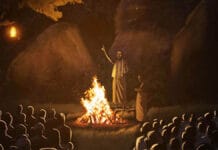Black comedy, also known as dark comedy, is a genre of comedy that finds humour in subjects typically considered serious, taboo, or distressing. It uses satire and irony to explore themes like death, crime, illness, and existential despair, often to provoke thought and challenge societal norms.
The roots of black comedy can be traced back to ancient literature and drama, where playwrights like Aristophanes and Shakespeare used dark humour to critique society and human nature. The genre gained prominence in the 20th century, particularly after World War II, as writers and filmmakers began exploring modern life’s absurdity and horror. The existential crises and societal upheavals of the time provided fertile ground for black comedy. It became increasingly mainstream in the 1960s and continues to be popular in various media forms.
Taboo Subjects
Black comedy tackles subjects that are generally considered off-limits or uncomfortable, such as death, mental illness, war, and violence.
Satire and Irony
The humour in black comedy often relies on satire and irony, highlighting the absurdity and contradictions in human behaviour and societal norms.
Moral Ambiguity
Characters in black comedies frequently find themselves in morally ambiguous situations, leading to a complex interplay between right and wrong.
Juxtaposition
The genre often juxtaposes grim or tragic scenarios with humorous elements, creating a contrast that emphasizes the situation’s absurdity.
Cognitive Dissonance
By combining humour with dark subjects, black comedy creates cognitive dissonance in the audience, prompting them to question their perceptions and responses.
Subversive Nature
Black Comedy challenges societal norms and expectations, often making audiences uncomfortable while simultaneously amusing them.
Cynicism
Black comedy often presents a cynical or pessimistic view of the world.
Emotional Distancing
It can create a sense of emotional distance from tragic events, allowing audiences to process complex subjects.
Techniques
Exaggeration
Amplifying certain aspects of reality to highlight their absurdity or horror.
Understatement
Downplaying serious events or emotions to create a contrast that can be humorous or jarring.
Incongruity
Placing characters or situations in settings or contexts that seem out of place to create humour.
Parody
Imitating and mocking established genres, institutions, or cultural norms.
Shock Value
Using unexpected or taboo elements to provoke a response.
Gallows Humour
Finding comedy in desperate or hopeless situations.
Purpose and Effect
Black comedy often serves as a form of social commentary, using humour to highlight society’s flaws and hypocrisies. The genre provides a way to deal with complex subjects by finding humour, helping creators and audiences confront and process painful realities. By presenting severe topics in a humorous light, black comedy challenges audiences to think critically about their own beliefs and values. It can open up discussions about topics that are usually considered off-limits.
Criticisms and Controversies
Some may find black comedy insensitive or offensive, especially when dealing with deeply personal or traumatic subjects. There’s a risk that the humour may be misunderstood or taken at face value, potentially reinforcing harmful attitudes. What’s considered acceptable in black comedy can vary significantly across cultures.
Notable Examples
Waiting for Godot by Samuel Beckett is a notable example. This play uses absurdity and dark humour to explore existential themes of meaninglessness and despair. The Lieutenant of Inishmore by Martin McDonagh, a darkly comedic take on terrorism and violence in Ireland, is another example.
Black comedy is a powerful and provocative genre that uses humour to explore and critique the darker aspects of human experience. By juxtaposing the grim with the humorous, it invites audiences to confront uncomfortable truths and reflect on the absurdities of life. Whether through literature, film, television, or theatre, black comedy continues to push boundaries and challenge societal norms, making it a vital and enduring form of artistic expression.




























